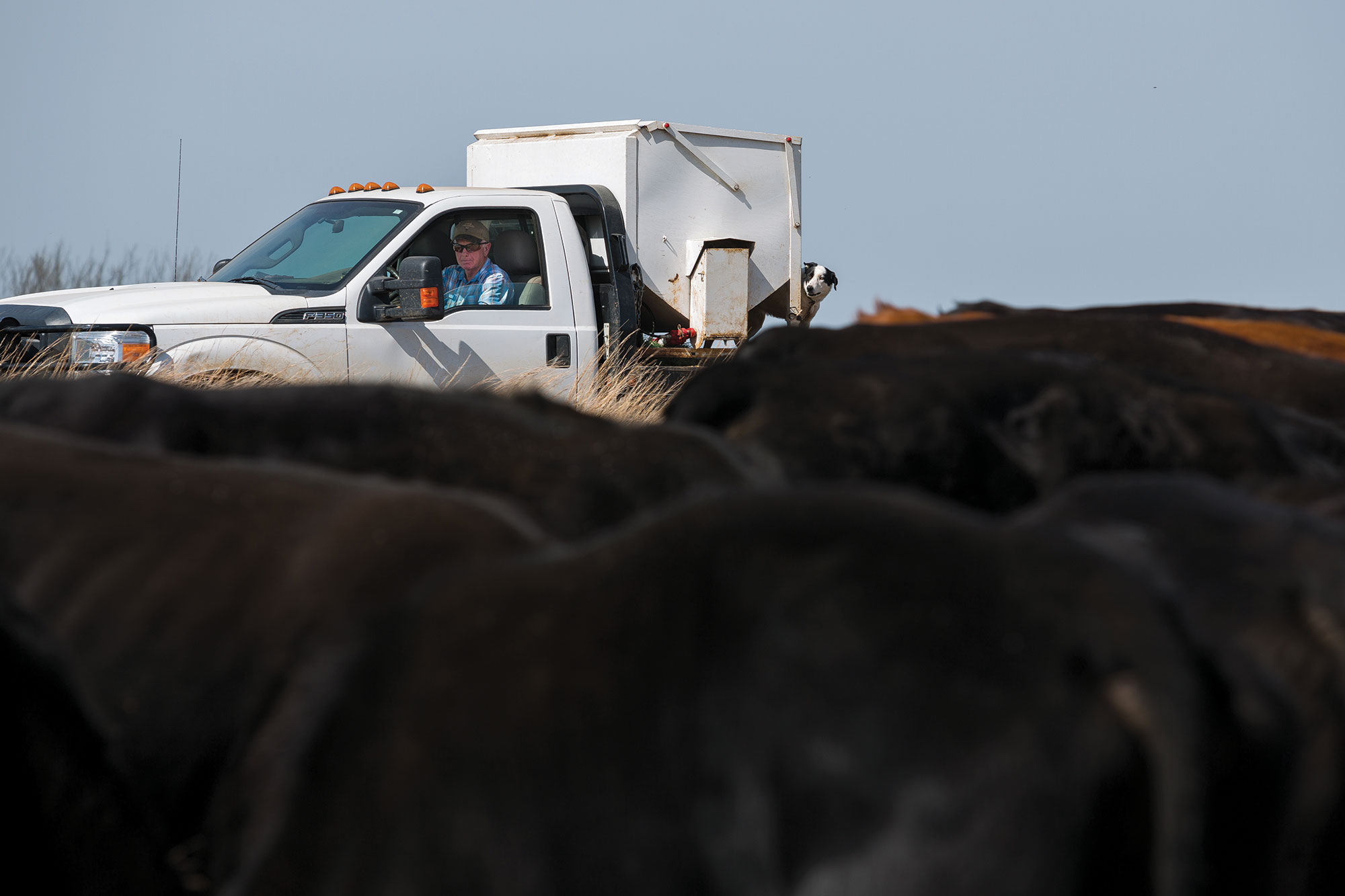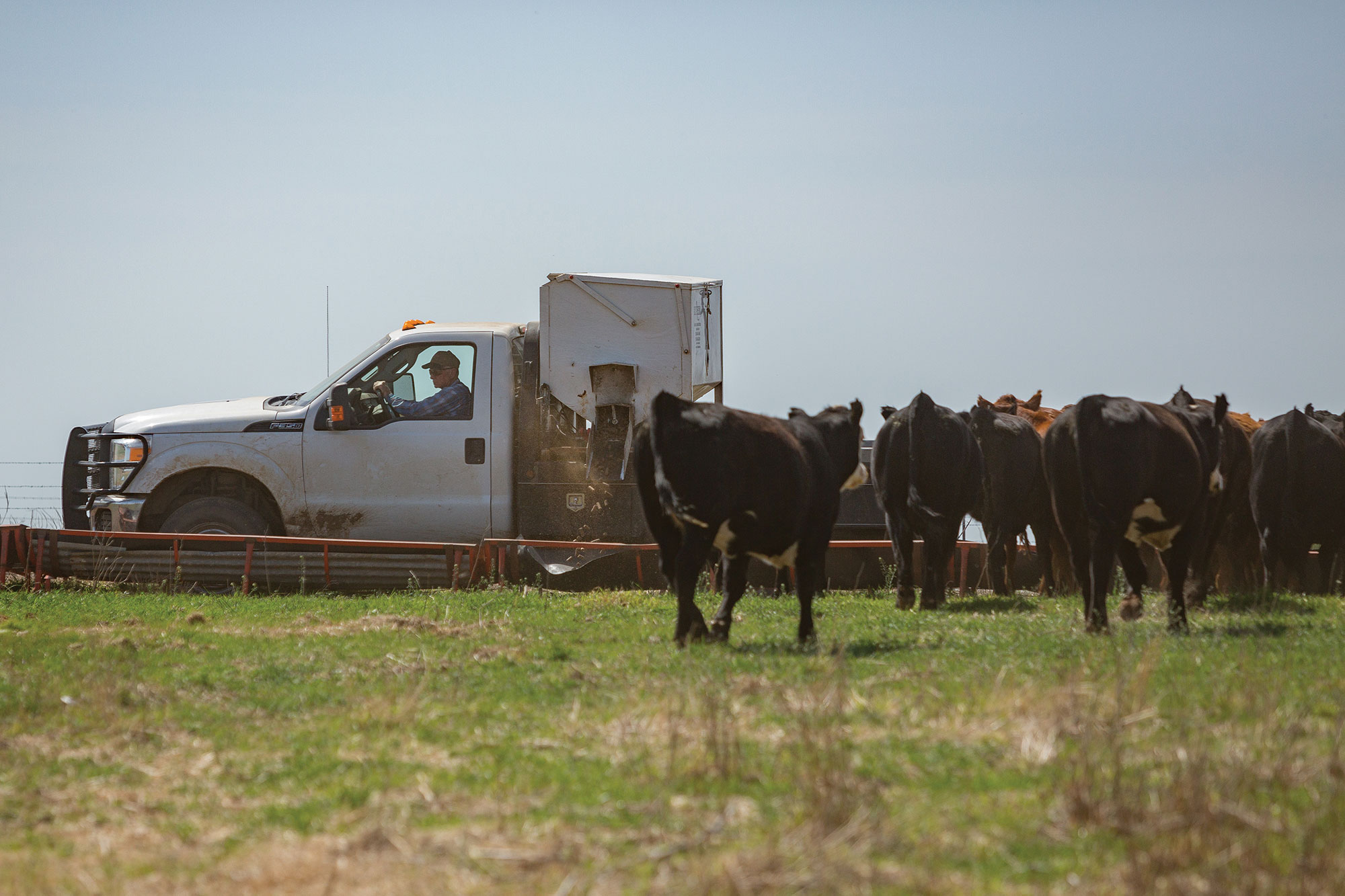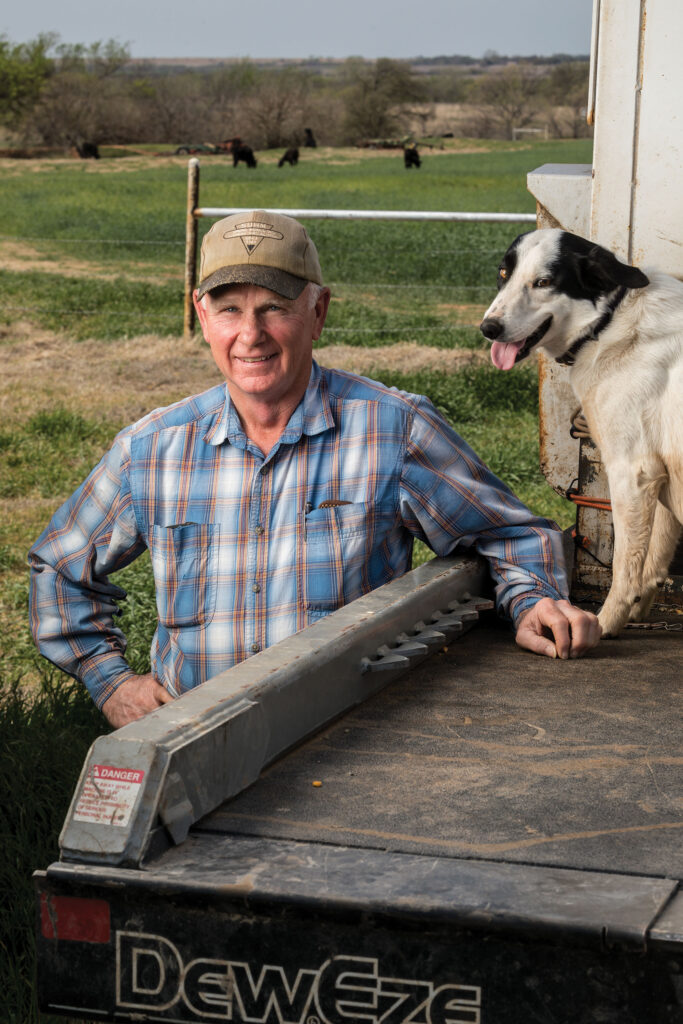Oklahoma Rancher Reflects on First 3 Years With Cover Crops, No-Till
In 2015, Lee Wayne Stepp embarked on a journey to improve his southwestern Oklahoma soil through cover crops and no-till. Three years later, he shares some of the ups and downs and why he is keeping to the path.
Lee Wayne Stepp had enough of caterpillars crunching through his wheat pasture.
Each fall was bringing more armyworms hungry for the forage Stepp planted for cattle on his 3,700-acre farm in southwestern Oklahoma. Stepp was also fighting fungal and bacterial diseases along with other insect pests in his fields.
By the early 2010s, Stepp knew his wheat, which has been his family’s staple crop for more than 50 years, needed reinforcements. During a search for a crop to rotate with wheat, he came across the concept of cover crops.

Traditionally, Stepp plants wheat in the fall. Cattle eat the young forage through the winter and into the spring, and then the cattle are sold and the ground lies bare until wheat is planted again in the fall. But with cover crops, one or more different crops are planted between seasons of wheat.
The idea is to keep the ground covered year-round and to expand biodiversity in the soil. Just like a successful community needs people with different skills — builders, teachers, doctors — the soil gains strength when a variety of species contribute to its underground society.

Working Smarter, Not Harder
Stepp hoped to use cover crops to improve his forage production and to reduce costs associated with curbing pests and diseases. First, like anyone looking to adopt cover crops, he faced a question, “What do I plant?”
“Every farm is going to be different,” says Jim Johnson, the Noble Research Institute soils and crops consultant whom Stepp called upon for advice.
The pair developed a three-year rotation. Every third year, Stepp would switch out his wheat for a multispecies mix his cattle could graze. Every year, he would plant a mix as a cover crop to grow in the summer.
During these conversations, Johnson also encouraged Stepp to try no-till. Tillage has long been thought to be the best way to prepare soil for planting. But in the process of breaking ground and burying weeds, plowing reduces the richness of the soil microbial community. And once left bare, freshly turned soil is easily swept away by wind and water.
“I’ve plowed my whole life, and my dad and grandpa plowed their whole lives,” Stepp says, recalling dirt-covered tractors as a symbol of hard work. “But when you see the rain wash out the ditches and the diseases you have to be fighting, it seems like you’re making more work than it has to be.”

Build Soil Health, Fight Armyworms?
Armyworms are a major foe for forage producers on the Southern Great Plains. It’s too early to proclaim cover crops a solution for fall armyworm infestations. However, some producers, including Lee Wayne Stepp from Comanche, Oklahoma, in 2017,have reported experiencing little to no armyworm pressure in their wheat pastures after a diverse, mixed-species summer over crop. The anecdotal evidence is enough to pique the interest of Brett Peshek, a Green Cover Seed representative who is looking further into the matter. Peshek warns growers that there is no guarantee they won’t face armyworm issues if they plant cover crops. But cover crops, through increased biodiversity, can attract beneficial insects that act as natural predators to pests like armyworms.
Learn more in his article at www.greencoverseed.com/build-resistance-armyworms.
A Different Mindset
Johnson helped Stepp select his first cover crop, a mix of turnips, black oats, sorghum-sudan and triticale, which Stepp planted in 2015. The same year, he began working toward going 100 percent no-till in three years.
“The first year was rough,” Stepp says. “My goal is to reduce inputs while increasing outputs, and that doesn’t happen in Year 1.”
While wheat production fell by as much as half in Stepp’s no-till fields that year, the sorghum-sudan cover crop grew taller than his tractor. So, in addition to buying no-till planting equipment, Stepp had to put a GPS on his tractor to help him “see” when sowing wheat into the cover crop in the fall.
The unruly vegetation was enough to garner skepticism from neighbors. People asked why he wasn’t brush-hogging or baling it for hay, Stepp says.
“It’s a completely different mindset,” Johnson says. “The tendency is to want to use every bit of what you plant, but we want to leave some of it to feed the soil. The difficulty is you don’t get paid for feeding the soil. You get paid for putting beef across the scale.”

More Time for Cattle
Stepp saw some improvement in his no-till fields during the second year, but he anticipates each field will need at least three to five years to make the transition.
While wheat production is down in some fields for now, the cover crop provides a source of forage that Stepp typically wouldn’t have in the summer. As a result, he’s been able to tend more cattle, which he says is his favorite aspect of the operation.
“Dad always said you didn’t need to have stockers in the summer because you couldn’t take care of them. You were busy plowing to get ready for the stockers to come in the fall,” Stepp says. “But guess what? Now we’ll have time to see to stockers in the summer.”
In April 2018, Stepp welcomed his third bunch of summer stockers (essentially the teenagers of cattle) to the farm. In May, he planted his cover crop. By June, drought dried up the land. Most of the cover didn’t sprout until rains returned in September.
It was the first summer in Stepp’s life that no field on the farm was plowed, but drought meant he spent much of his extra time baling hay to feed his cattle for the coming winter. While the stockers weren’t able to enjoy the cover crops until their last two weeks on the farm, some of Stepp’s home-raised calves grazed them in September.
“I was disappointed, but we still wouldn’t have been able to run as many calves if we hadn’t had the cover crop,” Stepp says. “That’s just part of it. It’s not the first time I’ve planted a crop and didn’t get a good stand.”
Soil Health Is an Investment
This year, it wouldn’t have mattered if the ground had been no-tilled or plowed, Stepp says. But he looks at improving soil health as an investment that could help him better weather future drought.
“As you get organic matter back into the soil, it’s going to hold more moisture there,” Stepp says. “No-till isn’t going to solve a drought, but it could help us survive drought better.”
But it won’t happen overnight, Johnson says. He encourages producers to start small and to surround themselves, even if only online, with others who are on the same journey. Be patient and persistent, he adds. It will take time for the weakened soil to gain strength.
“It’s been difficult at times, but I see how no-till and cover crops can help me be more effective,” Stepp says. “I want to be better at what I’m doing, so I’m going to keep down this path.”

Ask the Expert: James Rogers, Ph.D.
James Rogers, Ph.D., Noble Research Institute associate professor of pasture and range, is currently investigating how cover crops and no-till impact the production and economics of winter wheat. The system is commonly used to graze cattle from fall through spring in the Southern Great Plains.
Q: Why does it take so much time to see results from soil-building practices like no-till and cover crops?
A: I don’t think there are any simple answers, but for starters, when you look at the volume of soil, there are 2 million pounds of soil in the top 6 inches of 1 acre. To change that soil structure, it’s going to take a lot of forage mass and time. The amount of time it takes will also depend on the health of the soil to begin with.
From what we are seeing in our research field plots, one of the greatest immediate benefits of cover crops (even more so than no-till) is erosion control. Seeing soil wash away is what really hurts me. When soil washes, you’re moving nutrients and organic materials. And once it’s gone, it’s gone. When we had heavy rains in late September/early October, we saw the cover crop hold the soil in place. The rain pushed soil from our tillage fallow (no cover crop) plot to a neighboring tillage cover crop plot, where it just stopped.
There is no doubt that improving soil health is beneficial for both producers and society at large, but there are challenges associated with adopting soil-building practices like cover crops and no-till. Every producer will have to figure out how to incorporate these practices in ways that work on their operation. Our research aims to help inform their decision-making by looking at questions they might face, like when to graze and how long to grow covers, from the perspectives of soil health, crop and cattle performance, and economics.



Comment